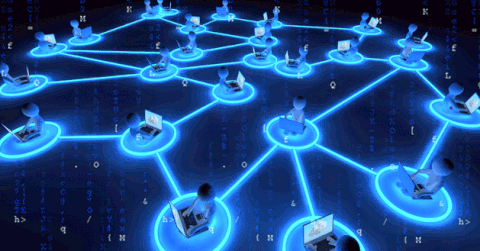
Computer Network
Course Objectives:
At the end of the course, the students will be able to:
1. Build an understanding of the fundamental concepts of data communication and computer networking.
2. Understand how errors detected and corrected that occur in transmission
3. How collisions to be handled when many stations share a single channel
4. Know about routing mechanisms and different routing protocols
5. Understand transport layer functions
6. Know about different application layer protocols
Learning Outcomes:
After completing this course the student must demonstrate the knowledge and ability to:
1. Describe the basis and structure of an abstract layered protocol model
2. Independently understand basic computer network technology.
3. Identify the different types of network topologies and protocols.
4. Enumerate the layers of the OSI model and TCP/IP. Explain the function(s) of each layer.
5. Identify the different types of network devices and their functions within a network
6. Understand and building the skills of subnetting and routing mechanisms.
7. Familiarity with the basic protocols of computer networks, and how they can be used to assist in network
design and implementation
8. Understand how the Internet works today.
9. Conversant with primitives of network application programming.
| Responsible | Poly Bhowmik |
|---|---|
| Last Update | 12/01/2021 |
| Completion Time | 14 hours 41 minutes |
| Members | 1 |
-
Lecture 1
-
Course Outline of Computer network
-
Syllabus of Computer network
-
Reference e-Book of Computer Networks By Andrew S. Tanenbaum
-
Reference e-Book of Computer Networks By Behrouz A. Forouzan
-
Reference e-Book of Computer Networks By Willium Stallings
-
Overview of Computer network
-
Previous Year Question
-
Overview of Chase Your Dream
-
Google Site Link of Computer Network
-
-
Lecture 2
-
Lecture Slide of Introduction
-
Recorded Lecture on Introduction
-
Computer Networks - Basic Characteristics
-
-
Lecture 3
-
Lecture Slide of Chapter 1
-
Question List on Chapter 1
-
Network Protocols & Communications (Part 1)
-
-
lecture 4
-
Recorded Lecture on Chapter 1
-
Network Protocols & Communications (Part 2)
-
Lecture Slide of Classification of Network
-
-
Lecture 5
-
Lecture Slide of Components of Network
-
Components of a Computer Network
-
-
Lecture 6
-
Lecture Slide of Network topology
-
Recorded Lecture on Topology
-
Network Topology
-
-
Lecture 7
-
Lecture Slide of OSI Model
-
Recorded Lecture on OSI Model
-
-
Lecture 9
-
Lecture Slide of ATM
-
Lecture Slide of ATM Part 2
-
-
Lecture 10
-
Lecture Slide of IP Addressing
-
Basics of IP Addressing
-
-
Lecture 11
-
Lecture Slide of TCP_IP Addressing
-
IP address network and host portion | subnet mask explained |
-
-
Lecture 12
-
Lecture Slide of Subnetting
-
How to Find the Number of Subnets Valid Hosts
-
-
Lecture 13
-
IP address & Subnetting Bangla Tutorial - 7
-
IP address & Subnetting Bangla Tutorial - 6
-
-
Lecture 14
-
IP address & Subnetting Bangla Tutorial - 5
-
IP address & Subnetting Bangla Tutorial - 4
-
-
Lecture 15
-
Lecture Slide of Chapter 2
-
Network Devices
-
-
Lecture 16
-
TCP Vs OSI
-
What is Transmission Media
-
-
Lecture 17
-
Lecture 3
-
Framing in Data Link Layer
-
-
Lecture 18
-
Error Detection
-
Flow Control
-
-
Lecture 19
-
lecture 4
-
-
Lecture 20
-
Mac Layer
-
Basics of MAC Addressing
-
-
Lecture 21
-
CSMA
-
Carrier Sense Multiple Access (CSMA) – Part 1
-
-
Lecture 22
-
Carrier Sense Multiple Access (CSMA) – Part 2
-
Controlled Access Protocol – Polling
-